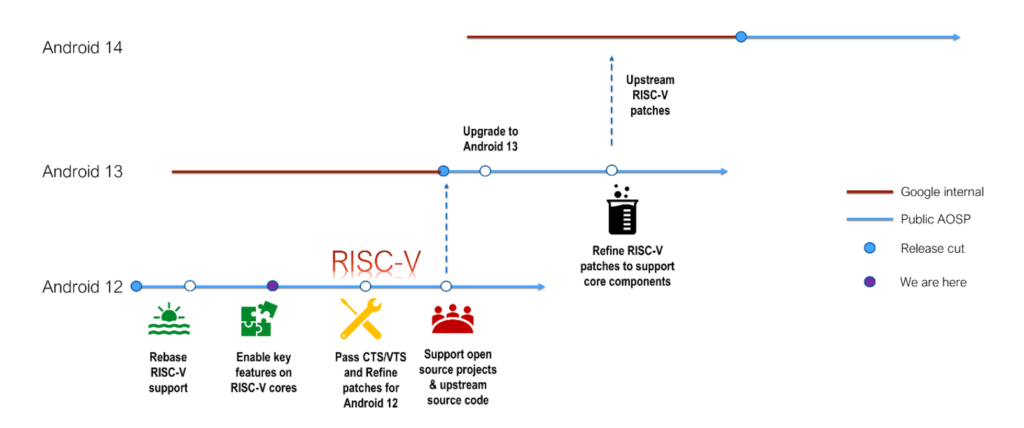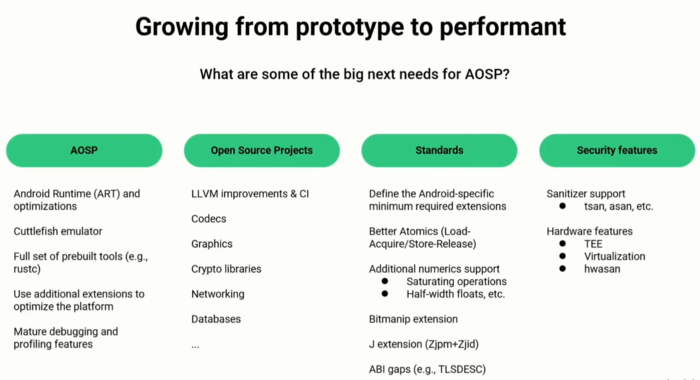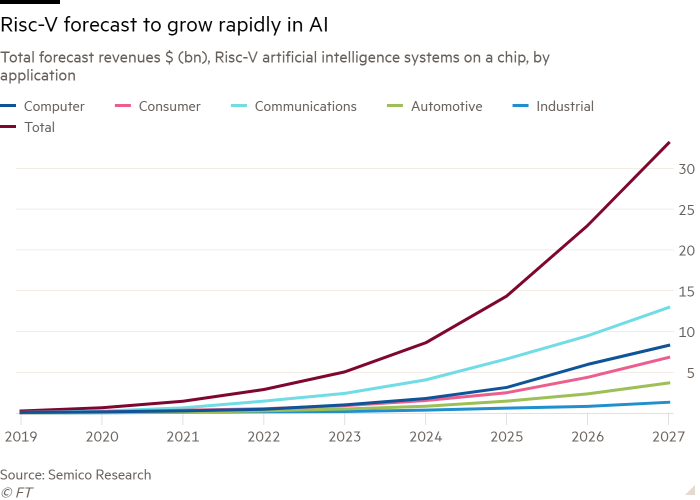a promising future thanks to China and Google

Not so long ago we wrote that the Chinese
seek to include support for the RISC-V architecture
in android. At the time of writing that article, it was unclear whether the representatives of the Middle Kingdom really managed to achieve what they wanted, or if it was just rumors. It is worth recalling that at that time it was about adding support to the Android Open Source Project.
But now it has become clear that the success is really successful – already Google stated about the intention to provide official support for the RISC-V architecture in the Android platform. Well, the official statement of such a large corporation is worth a lot. Note that back in the fall of 2022, the AOSP (Android Open Source Project) repository, which develops the source code of the Android platform, began inclusion of changeswhich provide support for devices with processors based on the RISC-V architecture.
Okay, but what about the Chinese?
The thing is that initially RISC-V support was added to the mobile OS by Alibaba Cloud. The development team has submitted about 80 patches for AOSP, which enable the system to work correctly with RISC-V. We are talking about both multimedia functions and wireless communication.
Of the submitted patches, about a third have already been integrated into AOSP, and the rest are on the way of integration. There are still a few months to complete the work, but, as far as one can understand, a huge piece of work has already been completed. If everything works out, and there is probably no doubt about this, then in the future mobile devices from China and other countries will be able to switch to the RISC-V architecture without losing anything in functionality and capabilities.
Well, this is not only about smartphones, if everything goes well, then RISC-V chips can be used in smart TVs, tablets and IoT systems, in conjunction with Android OS.
Now this work continues in collaboration with Google. In addition, a special Android SIG working group has been created at RISC-V International. It includes large technology companies, and this group is open to other organizations that are interested in addressing the issue of RISC-V support in the Android OS. Changes have already been made to OS subsystems that provide support for the specified architecture.
We are talking primarily about modifying modules such as the graphics stack, sound system, video playback components, bionic library, dalvik virtual machine, frameworks, Wi-Fi and Bluetooth stacks, RunTime, emulator, developer tools and various third-party modules. . These include machine learning modules for text recognition, sound and image classification.
When will Android support RISC-V?
A full transition from prototype to final product requires solving many problems and technical issues, both large and small. According to experts, these changes may take several years. True, there is already a build system that makes it possible to evaluate the state of the “riscv64” Android branch.

It will be possible to run all this in the emulator in a couple of weeks. Well, RISC-V support in Android RunTime (ART) is promised to be added in the first quarter of 2023.

By the way, Russia is also actively engaged in the development of technologies based on RISC-V. In September, an alliance was organized in the Russian Federation, which aims to develop the RISC-V architecture in Russia, including the release of new systems based on this architecture. The association includes fairly large players, including Yadro and Baikal Electronics, as well as the developer of the Astra Linux OS, the Astra group, the developer of the Vostok technological software and hardware platform, and the NRU Moscow Institute of Electronic Technology. It is worth noting that the first two organizations are already developing chips based on this architecture. The association is called the RISC-V Alliance.
The participants, having good experience in the RISC-V industry, plan to develop an ecosystem of domestic solutions. In particular, it is planned to ensure the compatibility of these solutions, create a testing ground for them, and also create a common database, access to which will be given to all members of the association. It is planned to allocate almost 28 billion rubles for the development of domestic RISC-V chips. If everything goes well with the introduction of architecture support in Android, it may well be that Russia will also have its own mobile devices – but, of course, it is too early to talk about this.
Android and RISC-V is a very interesting topic, but we have other articles, check it out – we talk about:
→ Dive into ready-made Kubernetes clusters with Deckhouse and werf
→ Copywriters no longer needed? We ask the new Notion AI neural network to write about Python
→ Strengthening Nginx with Fail2ban: testing and evaluating the “profit”
What’s next?

Thanks to the efforts of China, and not only China, the industry in question has begun to develop more actively than ever. According to analysts, by 2027 the share of RISC-V architecture and technologies in the semiconductor chip market will be 16%.

Well, the share of chips based on open architecture, which are used in currently actively developing technological areas, such as AI, will grow even faster. Above is a graph of growth in the volume of these destinations in billions of US dollars until 2027.






